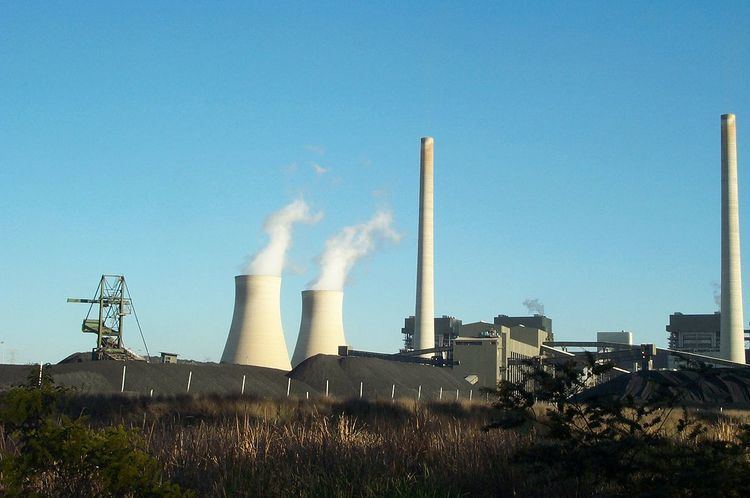Commission date 1985-1986 Units operational Four | ||
 | ||
Make and model Tokyo Shibaura Electric (Japan) Thermal capacity 2,640 megawatts (3,540,000 hp) Hours Open today · 8AM–5PMWednesday8AM–5PMThursday8AM–5PMFriday8AM–5PMSaturdayClosedSundayClosedMonday8AM–5PMTuesday8AM–5PM Similar Liddell Power Station, Redbank Power Station, Lake Liddell, Black Bulga State Conserva, Sandgate railway station - N | ||
Bayswater power station river stories hunter valley nsw abc1 13 apr 2012 fri 02 55pm
Bayswater Power Station is a bituminous (black) coal-powered thermal power station with four 660 megawatts (890,000 hp) Tokyo Shibaura Electric (Japan) steam driven turbo alternators for a combined capacity of 2,640 megawatts (3,540,000 hp). Commissioned between 1985 and 1986, the station is located 16 kilometres (10 mi) from Muswellbrook, and 28 km (17 mi) from Singleton in the Hunter Region of New South Wales, Australia.
Contents
- Bayswater power station river stories hunter valley nsw abc1 13 apr 2012 fri 02 55pm
- HistoryEdit
- Greenhouse emissionsEdit
- BoilersEdit
- Turbo alternatorsEdit
- Turbine houseEdit
- Emission stacksEdit
- Cooling towersEdit
- References
Prior to September 2014 Bayswater Power Station was part of NSW Government power producer, Macquarie Generation. Macquarie Generation was acquired by AGL Energy in September 2014.
HistoryEdit
The first generator was completed in 1985, and the remaining three generators progressively that same year and throughout 1986.
Bayswater draws its cooling water from the Hunter River under water entitlements negotiated with the government of New South Wales. The Barnard River Scheme also allows Bayswater and Liddell to transfer water from the upper Manning River catchment into the Hunter River for their use. Much of the coal is supplied by overland conveyors from mines it shares with the nearby Liddell Power Station.
Coal consumption is around 8 megatonnes (8,800,000 short tons) per annum and produces around 17,000 gigawatt-hours (61,000 TJ) of electricity a year. This is enough power for 2 million average Australian homes and families.
Greenhouse emissionsEdit
Carbon Monitoring for Action estimates this power station emits 19.80 million tonnes of greenhouse gases each year as a result of burning coal. In 2010 the Australian Government has announced the introduction of a Carbon Pollution Reduction Scheme to help combat climate change. It is expected to impact on emissions from power stations. The National Pollutant Inventory provides details of a range of pollutant emissions, including CO, estimated at 1,600,000 kilograms (3,500,000 lb) for the year ending 30 June 2011.
In 2009, the power station was the subject of "the first ever legal action aimed at curbing greenhouse gas pollution from a coal-fired power station". Environmental activist Pete Gray went to the Land and Environment Court of New South Wales, asking it to find that the power station had been "wilfully or negligently disposing of waste [...] by emitting carbon dioxide into the atmosphere in a manner that has harmed or is likely to harm the environment in contravention of section 115(1) of the Protection of the Environment Operations Act 1997", and sought an injunction against the station. The case, Gray and Anor v Macquarie Generation, was ongoing at the time of Gray's death from cancer in April 2011.
